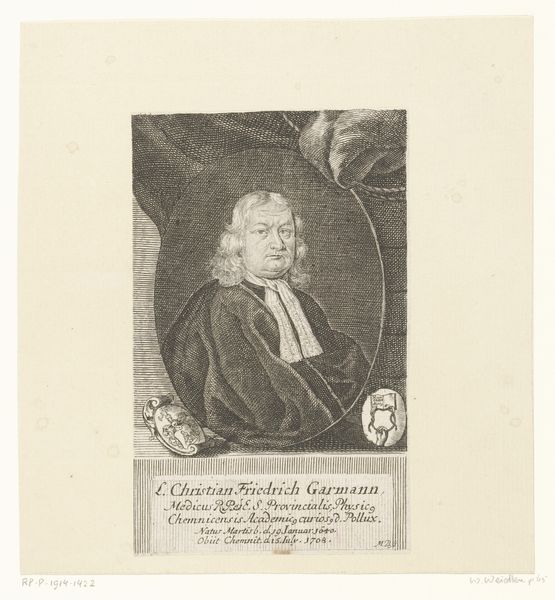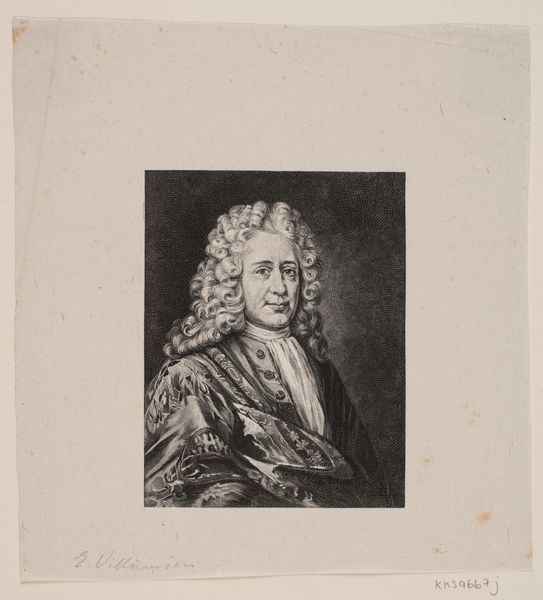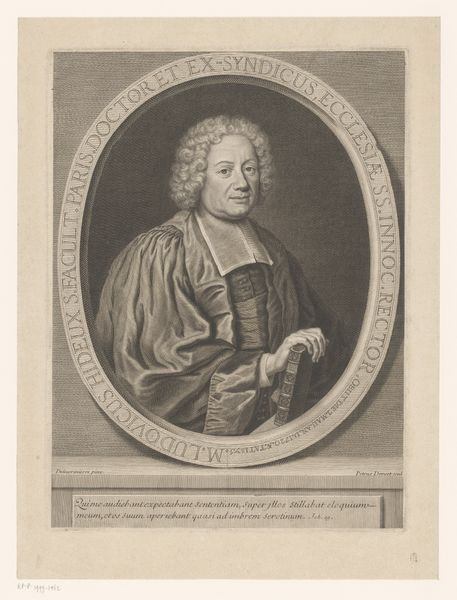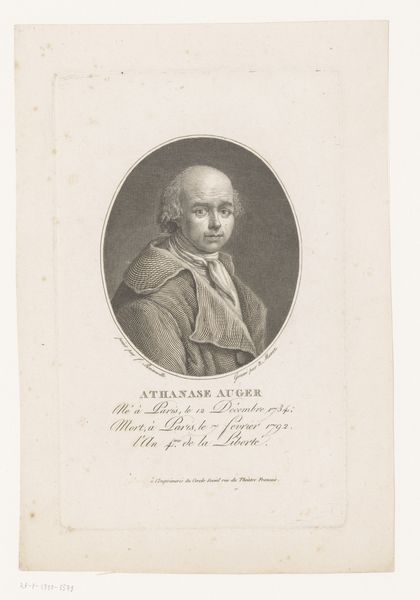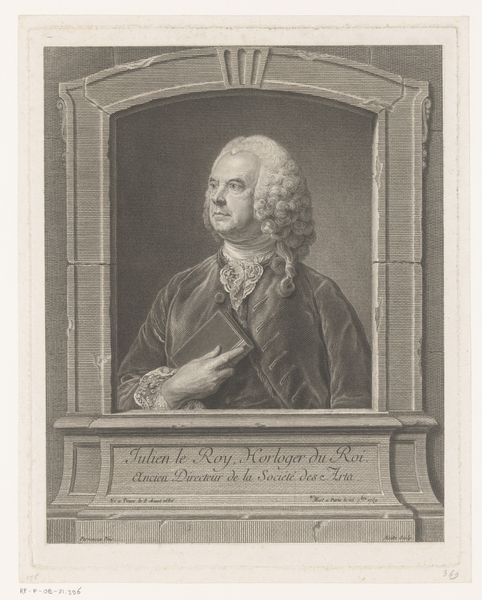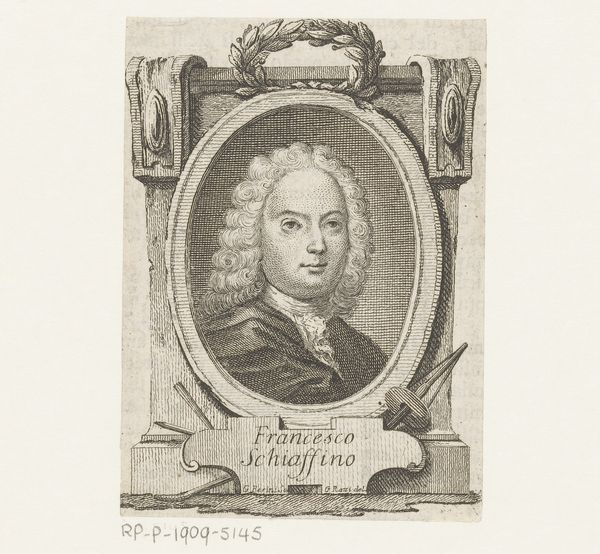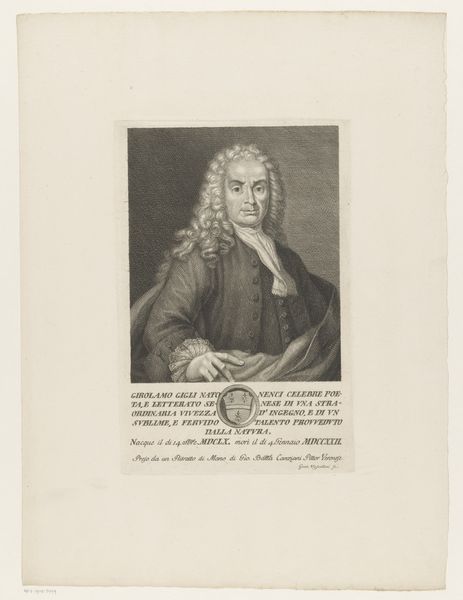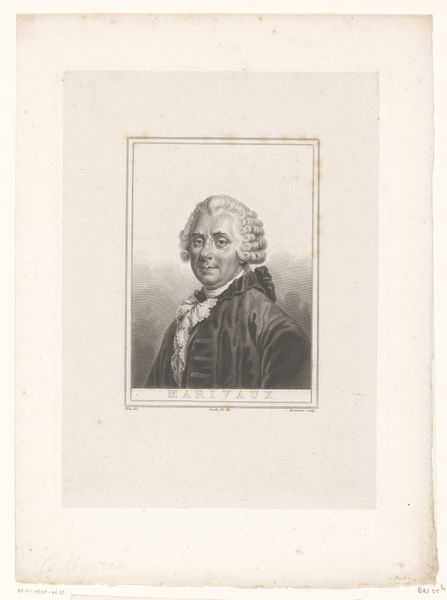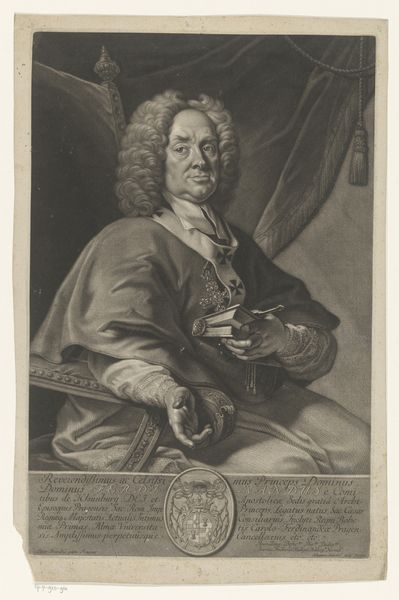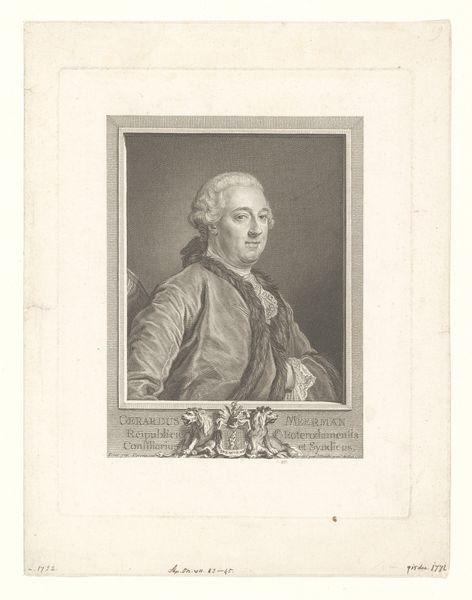
oil-paint
#
portrait
#
baroque
#
oil-paint
#
history-painting
Dimensions: height 222 mm, width 169 mm
Copyright: Rijks Museum: Open Domain
Editor: We’re looking at the “Portret van kunstenaar Francisco Preciado de la Vega,” painted sometime between 1752 and 1762. It's oil on canvas, and the artist, Antonio Pazzi, really captures the details in the folds of the sitter's clothing. What visual elements stand out to you the most? Curator: The interplay of light and shadow certainly sculpts the form, lending a sense of volume to the figure. Note how the artist directs our gaze with strategic highlights – see how they illuminate the face and hands, the primary expressive vehicles of the composition. Also, consider the function of line within the work: observe how it delineates form and creates a structured visual experience, contributing significantly to the painting's overall coherence. Editor: Yes, I noticed the line too. It's all so neat and defined. Do you think there is an important distinction between the texture of the skin versus the texture of the robe? Curator: Precisely. The smoothness of the skin is achieved through subtle gradations and careful blending of tones, contrasting with the heavier impasto and visible brushwork in the drapery. What effect does this textural juxtaposition have, in your view? Editor: It really does give a sense of depth and emphasizes the tangible qualities of the fabrics, but it makes the skin almost look unnaturally smooth. I'm beginning to see the contrast as maybe being about more than just textures. Curator: Indeed, by analyzing these structural elements – light, line, and texture – one begins to uncover the sophisticated visual vocabulary the artist employs to achieve a compelling and, perhaps, idealized representation. Editor: It’s been insightful to think about just how much the visual language communicates meaning and helps shape our experience.
Comments
No comments
Be the first to comment and join the conversation on the ultimate creative platform.
